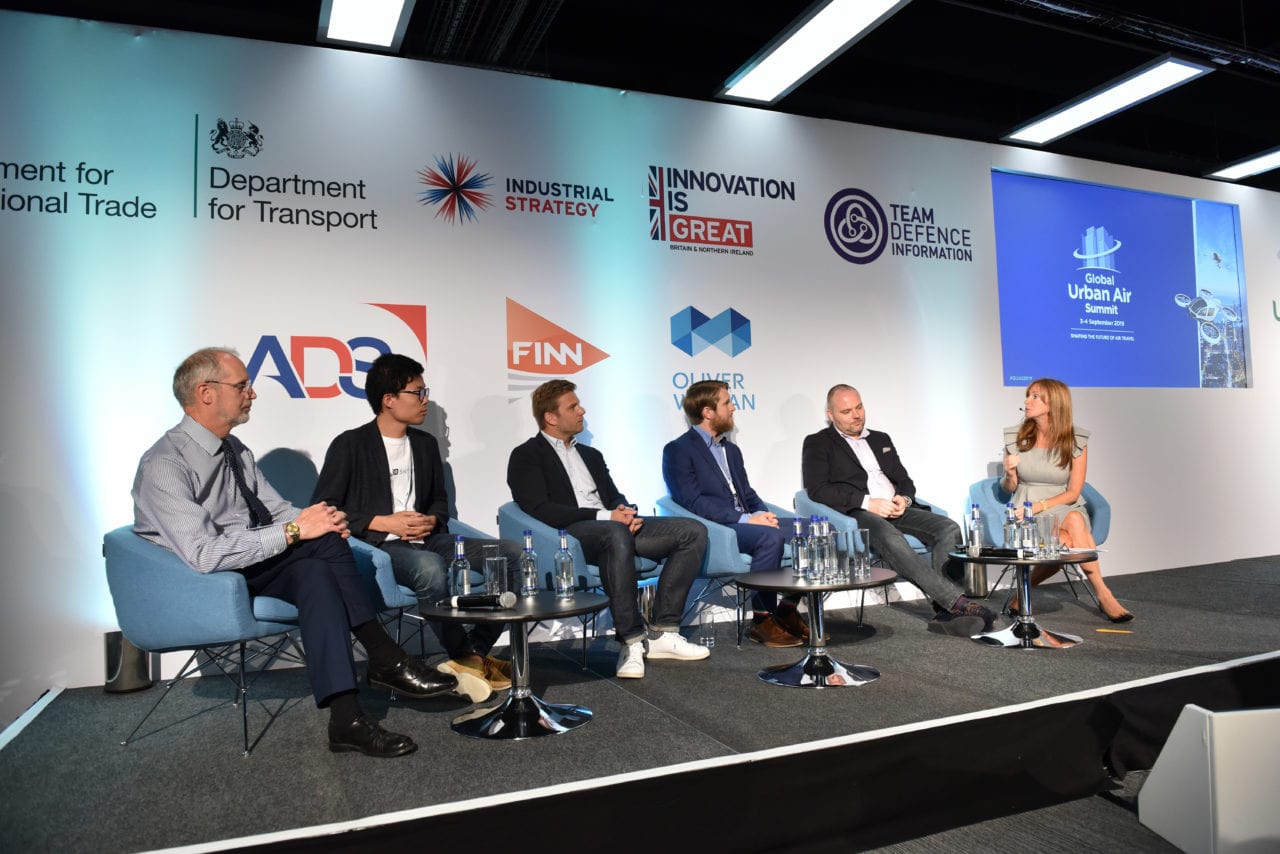
Gwen Lighter, CEO of GoFly, leads a panel on vehicle innovation at the Global Urban Air Summit in Farnborough.
Industry and regulatory leaders in urban air mobility (UAM) gathered this week at the Global Urban Air Summit in Farnborough, with regulators stressing their commitment to matching industry’s pace but underlining the litany of challenges faced by the emerging market.
During an international civil aviation regulatory panel discussion, Tim Johnson, policy director for the UK’s Civil Aviation Authority (CAA), underlined the importance of learning from trials of UAM technology to developing global regulatory standards. Society has a “low tolerance [for risk] and high expectation of safety standards for air travel,” Johnson noted alongside Jay Merkle, executive director for the FAA’s unmanned aircraft systems office.
“Regulators are accustomed to holding humans to account…autonomous vehicles make this a challenge,” Merkle added.
The leading challenges for UAM, in Johnson’s view, are planning, battery power, privacy demands and general public acceptance.
Regulatory standards must also be established around the entire vehicle life cycle, including reliable maintenance structure, added Mildred Troegeler, Boeing NeXt’s director of global aerospace integration.
Uber discussed what it has learned from the launched of Uber Copter in July 2019, with François Sillion, director of the company’s advanced technologies research center, sharing that Uber intends to create a “Skylane Network” to manage variables including weather, altitude and battery charging to deliver a successful passenger service.
 | Want more eVTOL and air taxi news? Sign up for our brand new e-letter, “The Skyport,” where every other week you’ll find the most important analysis and insider scoops from the urban air mobility world. |
On public acceptance, members of CAA, NATS and FAA agreed that societal acceptance won’t come until vehicles are flying.
“Major airline traffic is growing,” said Jon Round, head of aerospace at CAA. “The general aviation sports and leisure community is fearful of the UAM market, and society is concerned about noise impacts. The CAA has to marry all three but noise is a major issue.”
Insights on regulation in fast-changing environments and battery management also came from Stu Olden, senior commercial manager for Williams Advanced Engineering, who drew parallels with Formula One.
UAM and Formula One face similar challenges: strict regulations which change and adapt, rapid technology development, and sustainability and environmental pressures, according to Olden. Formula One employs real-time analysis of batter power during races, Olden explained, advocating for a systems engineering approach to better manage cells and the health of battery packs for UAM.
“Batteries are never good enough – from iPhones to eVTOL,” agreed Fabien Nestmann, global head of public affairs for Volocopter. “The more lightweight powerful batteries, the better.”
Regulators stressed that they hope to match industry’s pace, with CAA’s technology and innovation manager Frédéric Laugère explaining, “As regulators, we want dialogue with the industry. We want to undertake trials in a safe environment to see what works, and what doesn’t work.”
“You [the UAM industry] have a grand vision which is scary for us. We understand there are many steps and the need for regulation to move at pace with your journey, and we want to become more agile.”